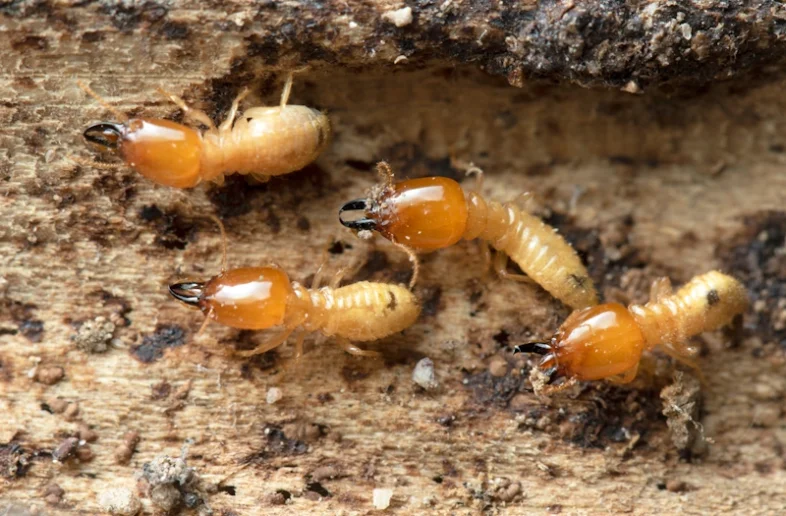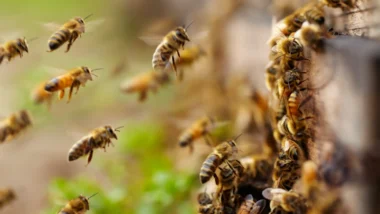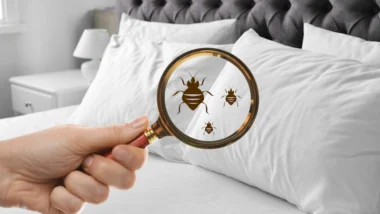What are signs of termites? The discovery of a solitary termite might give the impression of minimal threat, given their diminutive size, typically ranging from a quarter to half an inch. However, the presence of one termite is often an indicator of a more extensive issue—a hidden colony nearby consisting of thousands of these destructive pests. While the damage inflicted by a lone termite may be marginal, the collective impact of an entire colony can devastate the structural integrity of buildings.
A termite colony is a sophisticated social network comprising a queen, workers, soldiers, and other reproductive termites. The lifespan of a termite varies depending on species and social role, spanning from two to 50 years, with some colonies persisting indefinitely. These colonies can amass over a million individual members, voraciously feeding on any wood they encounter.
What Are the Signs of A Termite Infestation?
Signs of termites: Termites can easily become a costly property issue. If left untreated, a termite invasion can devastate your home’s structural integrity. Be proactive in preventing termite damage by looking for signs of termites in your home or property.
Nexus Pest Solutions can work with you to develop a termite protection plan that includes an annual house termite inspection.
Blisters and Buckling in Wood Flooring
The emergence of buckling or blistering in your wood flooring is one of the clearest signs of termites or termite activity. Subterranean termites can damage the subfloor, leading to discoloration or an undulating surface on your wood flooring. This phenomenon occurs because termites prefer softer subfloor wood or support structures, making their presence inconspicuous until substantial damage has already occurred beneath the surface. Recognizing these distortions in your wood flooring is crucial for early detection and timely intervention against termite infestations.
Compromised or Hollowed Wood Structures
One of the most common signs of termites or termite-induced damage often manifest in hollowed or compromised wood, mainly concealed below surfaces such as walls and floors. Termites possess the uncanny ability to devour wood from the inside out, making their presence elusive to the untrained eye. These minuscule pests meticulously hollow out the wood studs within walls without emerging, creating a distinct emptiness when tapped upon. The termites’ voracious chewing creates long grooves, intricately resembling a maze or adopting a honeycomb pattern within the walls. Over time, these grooves compromise the structural integrity of the wood, leading to potential long-term damage that requires immediate attention.
Swarming Termites
The emergence of swarmers, or flying termites, signals a critical phase in the termite life cycle, making swarmers one of the key signs of termites. These winged termites break away from their existing colony to seek mates and establish new colonies. Swarming typically occurs during specific times of the year, and a swarm can consist of hundreds or even thousands of flying termites. Observing a swarm of flying termites in or around your property clearly indicates that termites may have established a presence in the vicinity for an extended period, potentially causing hidden damage over the years.
Termite Wing Piles
One of the most important signs of termites is finding discarded termite wings close to your home’s windows, doors, and other entry points. Termites attracted to the external light fly towards windows during their mating flights.
Once they land, they intentionally shed their wings as they no longer serve a purpose. Accumulations of these discarded wings, often mistaken as an indication of termite mortality, may signify an active termite presence. Termites might be engaged in establishing a new colony nearby, necessitating swift and thorough intervention to prevent further infestation and structural damage.
Hard-to-Open Doors and Windows
As termites delve into the wood in pursuit of cellulose, they inflict damage that results in the warping or buckling of the affected wood. This impairment, in turn, can impede the smooth operation of doors and windows, making them challenging to open or close. Difficulty maneuvering windows and doors and instances of them sticking or failing to fully close should not be overlooked, as these can be early indicators of a potential termite infestation within your home.
Mud Tubes
Subterranean termites, known for nesting underground, employ mud tubes to forage from their subterranean habitat to potential food sources, such as residential structures, trees, or sheds. These pencil-sized tubes are often located where the ground meets your house or any other potential food source.
Frass or Termite Droppings
Inhabiting the interior of wood, drywood termites create galleries as they tunnel through and consume the wood. To maintain cleanliness within their nest, they create kick-out holes that expel their droppings, known as frass. Since drywood termites feed on wood, their frass consists of wood particles.
Finding Termites During Home Renovation
When engaging in home remodeling, staying vigilant for live termites within the wood you’re dismantling is crucial. One of the most common ways to spot termites is by keeping a careful watch during remodeling or renovation efforts.
It’s imperative to recognize that removing damaged wood doesn’t eradicate the infestation. Termites can easily dwell in the soil surrounding your home, within decaying or moist wooden components of your house, or anywhere on your property where organic matter containing cellulose is available, such as in tree stumps or firewood piles. Getting rid of termites without the help of a professional termite/pest control service is almost impossible.
Damaged Wallpaper or Drywall
Drywall, consisting of cellulose paper, is a primary food source for termites. As termites feed, they leave discernible trails on the surface and inside drywall. Pin-sized holes may become noticeable on your drywall or wallpaper, indicating termites have tunneled through.
Musty Odors
Termites prefer wood in high-moisture environments, typically accompanied by a moldy scent. If you detect a musty smell within your home and cannot locate the source, it could be one of the active signs of termites on your property.
Don’t Let a Termite Infestation Ruin Your Home or Property
Are you concerned about a potential termite infestation and signs of termites in your Mequon or Milwaukee home? Don’t let these silent destroyers compromise your property. Call Nexus Pest Solutions today at 414-355-3732 for a comprehensive termite inspection.
Nexus Pest Solutions experienced team is ready to assess and address any termite issues, ensuring the protection of your home.
Don’t wait until it’s too late – take action now and secure peace of mind by contacting Nexus Pest Solutions for expert termite solutions.


